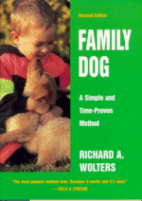Nonfiction Book Reviews
Page Three of FourThe Elegant Wedding and the Budget-Savvy Bride by Deborah McCoy
Plume, January 1999.Trade Paperback, 236 pages.
ISBN: 0452278503.
Ordering information:
Amazon.com.
 Author and professional wedding consultant
Debbie McCoy explains how to have an
elegant and affordable wedding through
her Ten Commandments of Elegant Wedding
Planning which include "Spend only
what you can afford," "Read the contract (including
the fine print (and learn to adapt it)," "More
Does not mean better," "Guests are the central
players" and "Be pleasant and kind."
McCoy provides details on how to apply these
principles to conserve money on wedding
necessities and thrills including: engagement rings,
the ceremony, the reception, entertainment,
photography, videos, flowers and decoration,
honeymoons, invitations, wedding gowns,
bridesmaids' dresses, wedding cakes, formal
wear and transportation.
The appendix includes information on
wedding-related companies and websites, as well as
a collection of wedding cake recipes.
A great reference for couples getting married with
invaluable
information on how to keep costs down, without
taking away from the wedding experience itself.
Author and professional wedding consultant
Debbie McCoy explains how to have an
elegant and affordable wedding through
her Ten Commandments of Elegant Wedding
Planning which include "Spend only
what you can afford," "Read the contract (including
the fine print (and learn to adapt it)," "More
Does not mean better," "Guests are the central
players" and "Be pleasant and kind."
McCoy provides details on how to apply these
principles to conserve money on wedding
necessities and thrills including: engagement rings,
the ceremony, the reception, entertainment,
photography, videos, flowers and decoration,
honeymoons, invitations, wedding gowns,
bridesmaids' dresses, wedding cakes, formal
wear and transportation.
The appendix includes information on
wedding-related companies and websites, as well as
a collection of wedding cake recipes.
A great reference for couples getting married with
invaluable
information on how to keep costs down, without
taking away from the wedding experience itself.
Family Dog: A Simple and Time-Proven Method by Richard A. Wolters
Dutton, Feb., 1999Hardcover, 163 pages.
ISBN: 0525944729.
Ordering information:
Amazon.com.
 Family Dog, by Richard A. Wolters is not just another book about how to connect with the canine world in a positive way. Often such books are discouraging because like books on physical fitness, they promise much, but actually demand a great deal of one's personal time in an age when few
people, especially families, have time to do regular activities of any sort. This book is different.
Family Dog, by Richard A. Wolters is not just another book about how to connect with the canine world in a positive way. Often such books are discouraging because like books on physical fitness, they promise much, but actually demand a great deal of one's personal time in an age when few
people, especially families, have time to do regular activities of any sort. This book is different.
Family Dog is a book that should be adopted and brought home before a dog is adopted and brought home. Doing so will save everyone hours of frustration and disappointment. This method is so natural and easily implemented that a fairly young child or a moderately disorganized adult can follow it . The most important lessons, though, are for the child. Sadly, many children are not taught how to handle either their own dogs or how to handle a situation that occurs when they meet a dog that belongs to someone else. The result is that many children are bitten by either their own family pets or the neighborhood pets. Learning how to deal with animals ought to be part of the education of all children.
Owning a dog ought to be one of the happiest memories of any child, but tragically every year thousands of cute puppies who were brought home as Christmas or birthday gifts end up facing an early demise at the local dog pound because the dog has not been successfully incorporated into the family. The dog may have torn up anything from car seats to sofa pillows. It may have bitten a child only because it was involved in a game of wild horseplay or only just torn up its owner's expensive clothes. The amazing thing is that ordinarily intelligent people who would never even consider allowing a child to grow to adulthood without being taught proper behavior or how to read and do math, will adopt a baby dog (puppy) and expect it to know how to grow up to become Lassie. The simple fact remains: all domestic animals need some training to give pleasure and comfort to their owners. Failure to deal with this fact will result in the dog having to be "gotten rid of" and you will be sad, frustrated and left with repair bills.
Family Dog is based on an impeccable source: scientific research. This project was directed by by Dr. J. Paul Scott, Director of the Animal Behavior Laboratory at Hamilton Station of the Roscoe B. Jackson Memorial Laboratory in Maine. The research was embarked upon while helping Guide Dogs for the Blind, Inc., in their own training program. You cannot get better or more thoroughly tested information anywhere. The discoveries about canine development were astounding. A dog, like a human child, develops along a timetable that is completely predictable, and like a human child, the young dog learns a very great deal unconsciously and very early in life. Wait too long and you will have missed a maximum and natural early learning period. Just as a human can either learn a second language very effortlessly before the age of five or spend years of study later in life to get a less perfect result.
Even though Family Dog is aimed at a young family with a child who wants a dog, the lessons contained are appropriate for those who do not have children or those whose home has suddenly become much too empty and quiet. The lessons are comprehensive in scope but so short and simple that they can be incorporated into any home situation. Especially helpful are the lessons on how to correct those unloved behaviors such as jumping up on persons wearing clean clothes, joining us on the living room sofa, stealing food from the dining room table, digging holes in the new and expensive landscaping effort and chasing cars. What could be simpler than yelling "no" and throwing a string of tin cans?
Research is showing that pets not only enrich the lives of children, but are also a health benefit to all humans. Get the book. Get the pup. Have fun.
Nonfiction Reviews
Page One | Page Two | Page Three | Page Four
Return to Book Reviews Index
More from Writers Write
Stephen King Quotes
quotes from the master
quotes from the master
Grammar Tips
improve your writing
improve your writing
Writing Prompts
spark your creativity
spark your creativity
